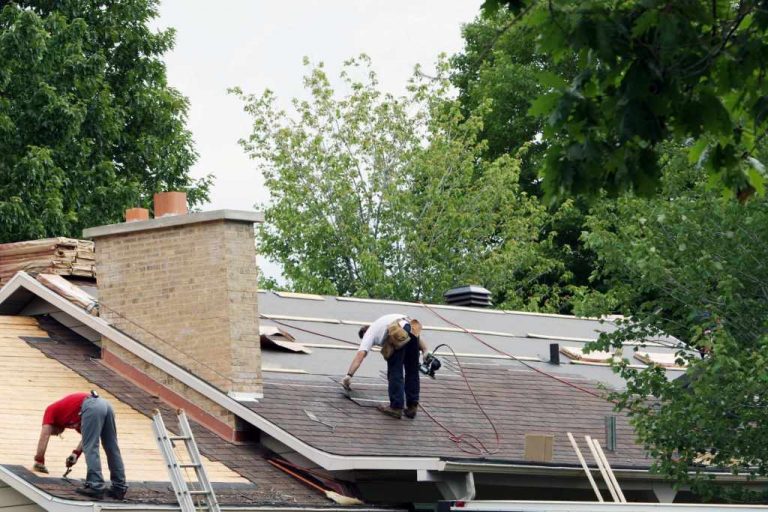When it comes to home improvement, one of the most impactful and cost-effective changes you can make is a fresh coat of paint. Whether you’re aiming to enhance your home’s curb appeal or create a cozy haven indoors, choosing the right painting contractor is crucial.
In this guide, we’ll explore the key factors to consider when searching for the best painting contractors to bring your home improvement dreams to life.
Defining Your Painting Project
Defining the scope and specifics of your painting project is the foundational step in ensuring a successful and satisfactory outcome. This initial phase involves a detailed analysis of your goals, preferences, and the areas you intend to transform. Here are key aspects to consider when defining your painting project:
1. Identify Areas for Painting: Clearly outline which areas of your home you want to paint. It could be the exterior, interior, specific rooms, or even accent walls.
2. Color Scheme and Design Preferences: Decide on the color scheme and design preferences for each painted area.
3. Surface Preparation Requirements: Assess the condition of the surfaces to be painted. Are there any repairs or preparation work needed, such as filling cracks, sanding, or priming?
4. Special Considerations: Identify any special considerations or requirements for the project. For example, if you have specific environmental concerns, allergies, or preferences for eco-friendly paints, communicate these to the contractors. Such details ensure that the project aligns with your values and lifestyle.

Researching Potential Contractors
Researching the potential of the best painting contractors is a crucial step in finding the right professional for your home improvement project. The goal is to gather information that goes beyond advertisements and testimonials to make an informed decision. Here’s a comprehensive guide to help you effectively research potential contractors:
1. Online Reviews and Ratings: Start your research by exploring online reviews and ratings. Websites like Yelp, Google Reviews, and Angie’s List provide valuable insights into the experiences of previous clients. Look for patterns in reviews, paying attention to both positive and negative feedback.
2. Ask for Recommendations: Seek recommendations from friends, family, neighbors, or colleagues who have recently undergone home improvement projects. Personal referrals can be invaluable, offering firsthand accounts of a contractor’s reliability, work quality, and overall professionalism.
3. Check Better Business Bureau (BBB) Ratings: Visit the Better Business Bureau’s website to check the ratings and accreditation status of potential contractors. The BBB provides information on the business’s history, customer complaints, and how effectively they resolve issues.
4. Verify State Licensing and Certifications: Confirm that the contractors on your list are licensed and certified to operate in your state. State licensing ensures that the contractor meets minimum standards and regulations.
Checking Credentials and Insurance
Ensuring that painting contractors have the necessary credentials and insurance is a critical step in protecting your interests and guaranteeing a smooth and professional home improvement experience. Here’s a guide on how to check and verify the credentials and insurance coverage of potential contractors:
1. License Verification
- State Licensing Board: Check with your state’s licensing board to verify the contractor’s license. This ensures that the contractor has met the state’s requirements for professionalism and competence.
- License Number and Expiry: Ask the contractor for their license number and confirm its validity. Check the expiration date to ensure that the license is current.
2. Certifications and Memberships
- Industry Associations: Inquire about any additional certifications or memberships in reputable industry associations. Contractors who are part of such associations often adhere to higher standards and best practices.

3. Insurance Coverage
- Liability Insurance: Confirm that the contractor carries liability insurance. This coverage protects you in case of accidental damage to your property during the painting project.
- Worker’s Compensation: Ensure that the contractor has worker’s compensation insurance. This is crucial in case a worker is injured on your property: otherwise, you might be held liable for medical expenses.
Quality of Materials and Techniques
The quality of materials and techniques used by painting contractors plays a pivotal role in the longevity, aesthetics, and overall success of a home improvement project. Here’s a comprehensive guide on how to assess the quality of materials and techniques employed by potential painting contractors:
1. Material Selection
- Paint Brands and Types: Inquire about the paint brands and types the contractor uses. Reputable contractors often have preferences for high-quality brands known for durability and color retention.
- Eco-friendly Options: If environmental considerations are important to you, discuss eco-friendly paint options. Many contractors offer low-VOC (volatile organic compound) or zero-VOC paints that are less harmful to the environment and indoor air quality.
2. Surface Preparation
- Preparation Methods: Assess the contractor’s approach to surface preparation. A thorough preparation process, including cleaning, sanding, and priming, is essential for achieving a smooth and long-lasting finish.
- Repairing Imperfections: Inquire about their process for repairing imperfections such as cracks, dents, or holes. A meticulous approach to surface repairs ensures a flawless result.
3. Application Techniques
- Brush vs. Roller vs. Spray: Discuss the application techniques the contractor employs. Each method has its advantages, and a skilled contractor should be proficient in using brushes, rollers, and/or spray.
- Number of Coats: Clarify the number of paint coats the contractor intends to apply. Multiple coats contribute to better coverage and a more resilient finish.
4. Priming
- Priming Process: Determine if the contractor includes a priming step in their process. Priming is essential for ensuring adhesion, uniform color, and increased paint durability.
- Type of Primer Used: Inquire about the type of primer they use. Different surfaces may require specific primers, and a knowledgeable contractor will select the appropriate one for each situation.

Conclusion
Choosing the right painting contractor for your home improvement project is a decision that goes beyond cost considerations. It involves a comprehensive evaluation of their credentials, work quality, communication skills, and commitment to customer satisfaction.
By investing time in research and thorough vetting, you can turn your vision into reality with a reliable and skilled painting contractor. Remember, your home is a reflection of your personality, and with the right professionals, you can color your dreams into vibrant reality.











